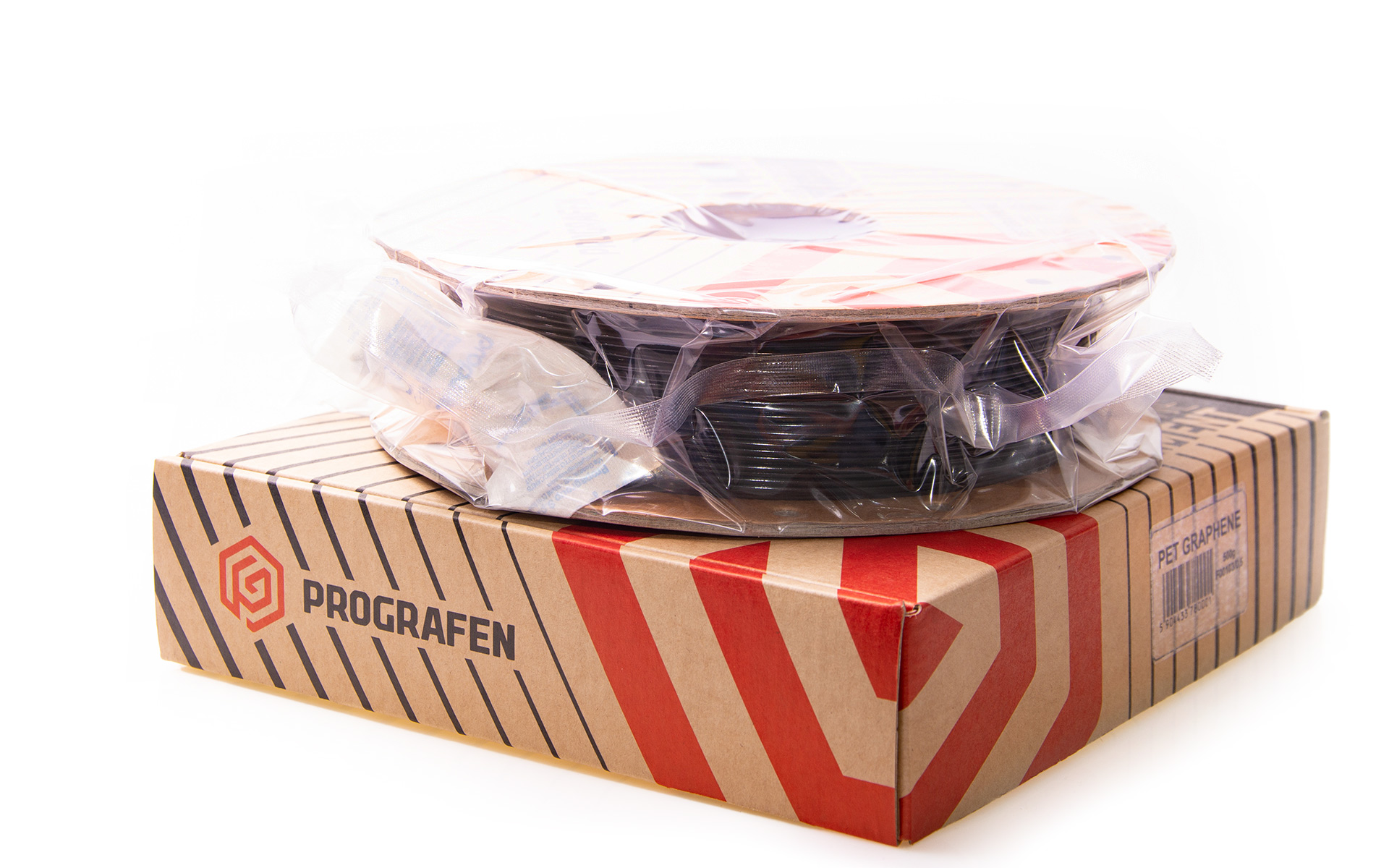Filament for 3D printers
Advanced Graphene Products S.A.
The first Polish commercial filament with graphene. Available in bulk and containing graphene with certified structure.
PLA and PET-G filaments are enriched with graphene flakes, which clearly improve the mechanical properties of the base materials such as the modulus of elasticity or tensile strength.
The first Polish commercial filament with graphene. Available in bulk and containing graphene with certified structure.
PLA FILAMENT with GRAPHENE – combines the advantages of ABS and PLA plastics
It is a composite material containing a nanoaddition in the form of graphene flakes. Thanks to it, the filament is characterised by high strength and durability in relation to the PLA base material.
PLA and PET-G filaments are enriched with graphene flakes, which clearly improve the properties of the base materials such as the modulus of elasticity or tensile strength.
This material is a perfect alternative to ABS, offering high mechanical properties (similar to ABS) and ease of printing characteristic of PLA. Importantly, it does not give off unpleasant odour when printing and gives you the ability to print effectively with any type of printer.
As far as the sectors using the filament with graphene are concerned, these are mostly: telecommunications, medicine, aviation and space industry. In everyday printing, they can be successfully used for printing prototypes, structural elements, toys and everyday materials.

What are filaments and what properties can differentiate them
Frequently asked questions (FAQ)
Our Sale Support Department, in cooperation with the Research and Development Department
will answer with pleasure all your questions concerning our products,
cooperation, the availability of measurement instruments or scientific knowledge.
Filaments with graphene have significantly better mechanical resistance and better printing parameters, without deteriorating other properties. They may be used for the following purposes: engineering, mechanical, prototyping, manufacture of spare parts, manufacture of toys or figures, and many other.
It is recommended to store filaments in a dark and dry place in a room temperature.
This is possible in the event of transparent and coloured filaments.h.
PLA filament, without graphene, is biodegradable.
No. Our currently available filaments do not conduct electric current but we are working on this!
Yes. This filament is suitable for 3D pens which have the thickness of 1.75 mm.
Printouts from PET-G are resistant to moisture and with proper printout settings, ensuring good adhesion between layers (e.g. thicker layers, wider outline), they may be waterproof. PLA is not waterproof and long-term contacts with liquid (especially the hot one) will deteriorate the printouts properties.
Yes. Filament with graphene is compatible with every printer which is able to print with standard 1.75 mm PLA and PET-G filaments.
Yes! Printing with PROGRAFEN filaments is easy, both in the variant with graphene and in those traditional variants, without graphene. We recommend PLA filament for beginners. It is easier in printing and less demanding in terms of printer parameters.
There are plenty of websites with models, both open-source and those charged, those more popular are:
www.thingiverse.com,
cults3d.com,
www.myminifactory.com
thangs.com
You can use any jets, also standard made of brass. Filament with graphene, unlike carbon fibre, is not abrasive.
Yes! It is more difficult than with PLA or ABS, so PET-G should be glued with a glue dedicated to polyesters, but if we do not have such a glue – an ordinary cyanoacrylate glue, such as Superglue, will stick the printouts together effectively. In order to improve adhesion, it is recommended to mat the surfaces stuck together by means of abrasive paper. Avoid epoxy adhesives because many of them do not bind such a material well.
The best adhesive for PLA is adhesive dedicated to polymers or epoxy adhesives, but an ordinary cyanoacrylate glue, such as Superglue, will also stick the printouts together effectively. In order to improve adhesion, it is recommended to mat the surfaces stuck together by means of abrasive paper.
